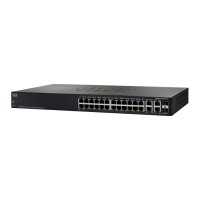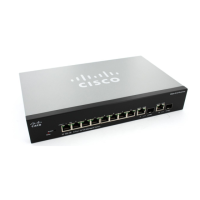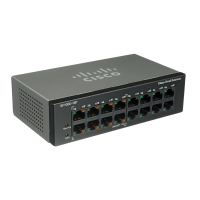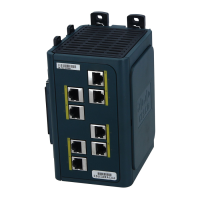Administration: Time Settings
Configuring System Time
Cisco Small Business 200, 300 and 500 Series Managed Switch Administration Guide (Internal Version) 79
6
• Source—How SNTP server was defined, for example: manually or from
DHCPv6 server.
• Interface—Interface on which packets are received.
STEP 3 To add a Unicast SNTP server, enable SNTP Client Unicast.
STEP 4 Click Add.
STEP 5 Enter the following parameters:
• Server Definition—Select if the SNTP server is going to be identified by its
IP address or if you are going to select a well-known SNTP server by name
from the list.
NOTE To specify a well-known SNTP server, the device must be connected
to the Internet and configured with a DNS server or configured so that a DNS
server is identified by using DHCP. (See DNS Settings)
• IP Version—Select the version of the IP address: Version 6 or Version 4.
• IPv6 Address Type—Select the IPv6 address type (if IPv6 is used). The
options are
- Link Local—The IPv6 address uniquely identifies hosts on a single
network link. A link local address has a prefix of FE80, is not routable, and
can be used for communication only on the local network. Only one link
local address is supported. If a link local address exists on the interface,
this entry replaces the address in the configuration.
- Global—The IPv6 address is a global Unicast IPV6 type that is visible and
reachable from other networks.
• Link Local Interface—Select the link local interface (if IPv6 Address Type
Link Local is selected) from the list.
• SNTP Server IP Address—Enter the SNTP server IP address. The format
depends on which address type was selected.
• SNTP Server—Select the name of the SNTP server from a list of well-known
NTP servers. If other is chosen, enter name of SNTP server in the adjacent
field.
• Poll Interval—Select to enable polling of the SNTP server for system time
information. All NTP servers that are registered for polling are polled, and the
clock is selected from the server with the lowest stratum level (distance from
the reference clock) that is reachable. The server with the lowest stratum is
considered to be the primary server. The server with the next lowest stratum
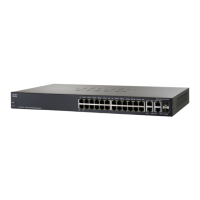
